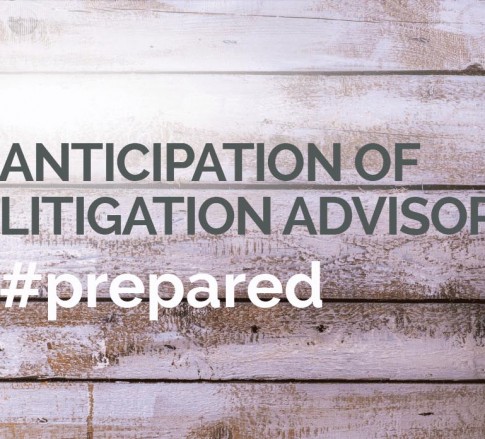Challenges of Seeking Substance Use Disorder Data in Civil Litigation: What You Need to Know
June 18, 2018
By: Neil C. Brown
As America’s opioid crisis endures, the procurement of substance use disorder data has become an increasingly common element of litigation and discovery. A Substance use disorder is defined as a cluster of cognitive, behavioral, and physiological symptoms indicating that the individual continues using the substance despite significant substance-related problems such as impaired control, social impairment, risky use, and pharmacological tolerance and withdrawal.1 Substance use disorder data could constitute or lead to compelling evidence in a variety of legal disputes. For example, evidence that an impaired company driver is a habitual user of drugs or alcohol could be quite valuable to proving a company’s negligence in hiring or retaining the employee.
While the privacy protections afforded to health information under the familiar HIPAA Privacy Rule are relatively common knowledge, few are aware that data relating to substance use disorders is even more stringently protected from unauthorized disclosure than general health information.2 Specific statutory steps must be precisely followed to obtain substance use disorder information.
These stringent privacy protections mainly stem from 42 C.F.R. Part 2 (“Part 2”)—the federal regulations promulgated by the Substance Abuse and Mental Health Services Administration. Generally, Part 2 privacy protections extend to substance use data created, received, or acquired by federally assisted entities that hold themselves out as providing substance use disorder treatment.3
One critical example of how Part 2 privacy protections differ from protections given to general health information is in the procedure necessary to obtain Part 2 records in civil litigation. First, a court order alone is not sufficient to compel the disclosure of Part 2 records.4 A subpoena or a similar legal mandate must be issued in addition to a court order to compel disclosure of Part 2 records.5 This mandate may be entered at the same time as and accompany an authorizing court order.6
Additionally, court orders compelling the disclosure of Part 2 records must be applied for using a detailed and specific procedural mechanism, which includes the following elements:7
- The application must use a fictitious name, such as John Doe, to refer to any patient and generally may not contain or otherwise disclose any patient identifying information.8
- The patient and the person holding the records must be given notice (which does not disclose patient identifying information) and must be given an opportunity to present testimony that good cause for the disclosure does not exist.9
- An order may only be granted for “good cause.”10 In order for a court to determine good cause exists for disclosure, other ways of obtaining the information must be unavailable/ineffective, and the public interest and need for the disclosure must outweigh the potential injury to the patient, the physician-patient relationship, and the treatment services.11
- The order must be narrowly tailored regarding the types of information that will be disclosed and must strictly limit disclosure on an as-needed basis.12
When seeking substance use disorder information, it is imperative to keep these federal privacy regulations in mind. Failure to comply with the technical requirements of Part 2 could result in a waste of time and legal fees. Additionally, it is important to thoroughly assess whether “good cause” exists to compel disclosure of substance use disorder data before going through the effort and expense of formally requesting it.
- 42 C.F.R. § 2.11
- See generally 42 C.F.R. Part 2
- 42 C.F.R. § 2.11
- 42 C.F.R. § 2.61(a)
- Id.
- Id.
- See generally 42 C.F.R. § 2.64
- 42 C.F.R. § 2.64(a)
- 42 C.F.R. § 2.64(b)
- 42 C.F.R. § 2.64(d)
- 42 C.F.R. § 2.64(d)(1)-(2)
- 42 C.F.R. § 2.64(e)



